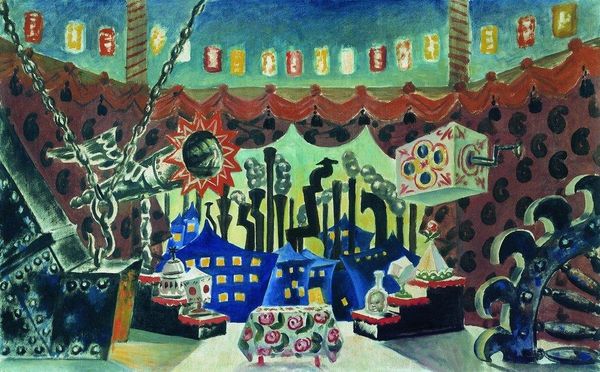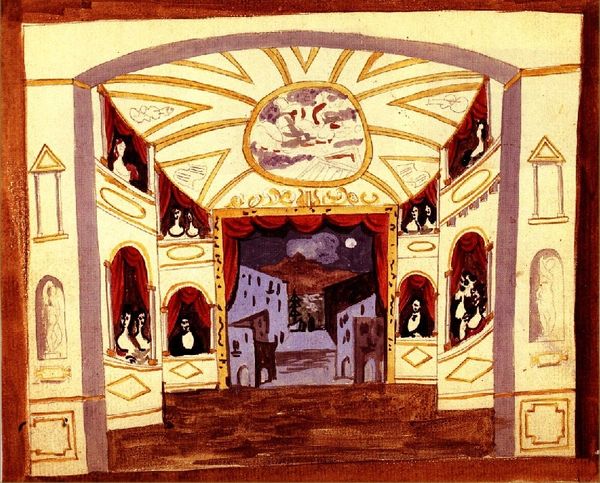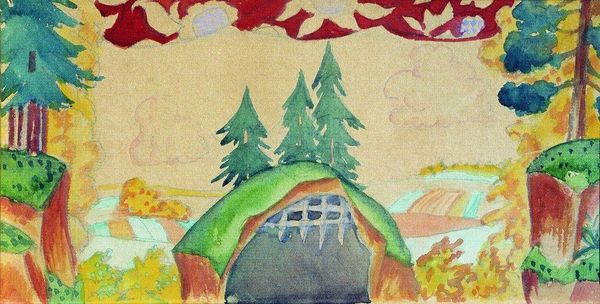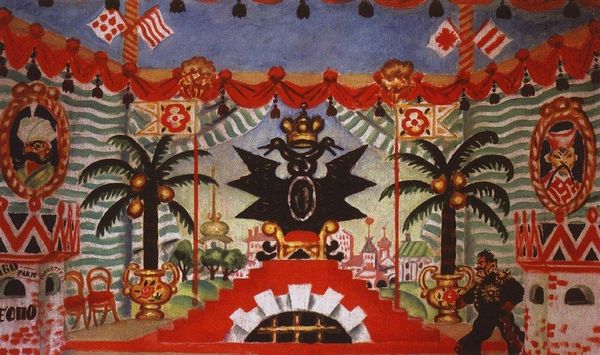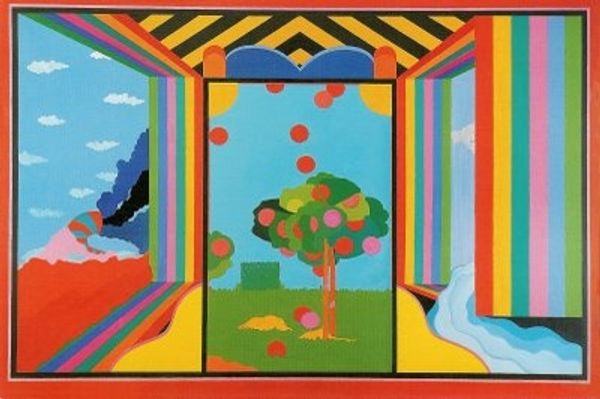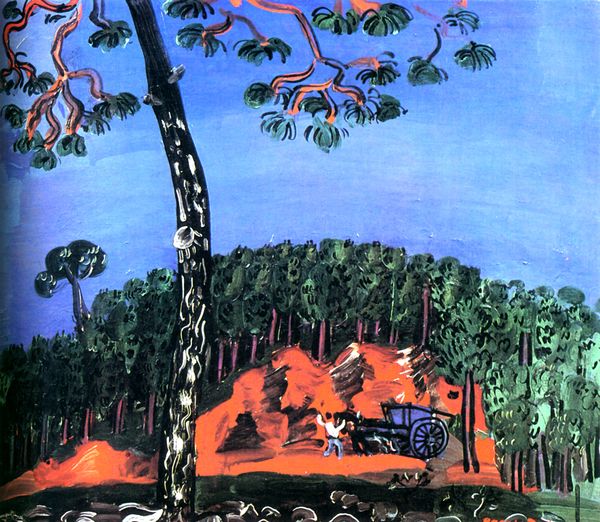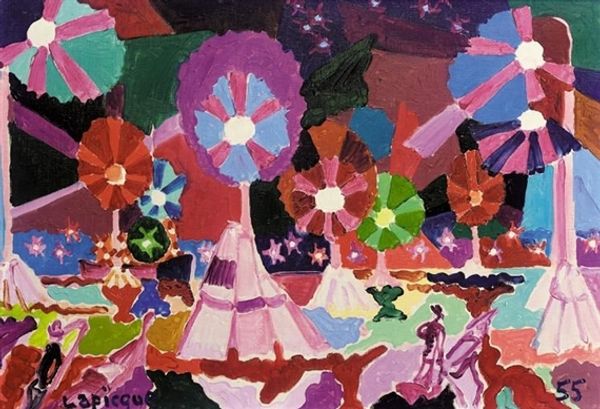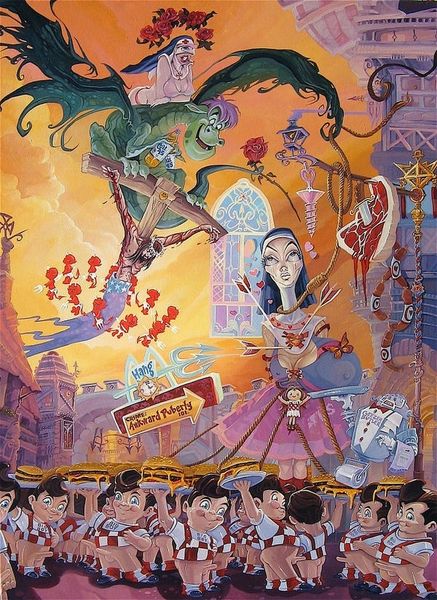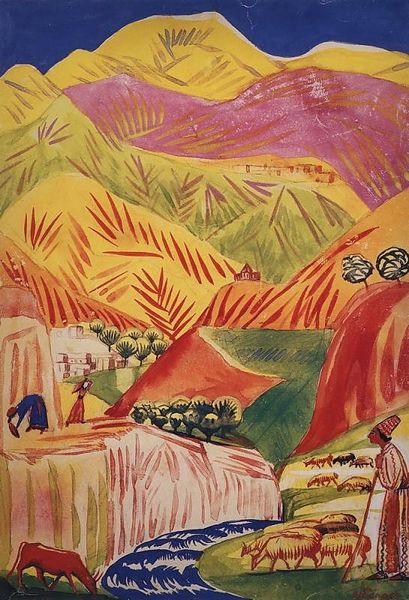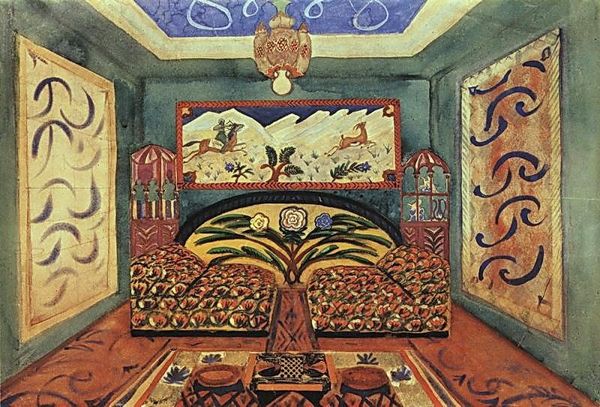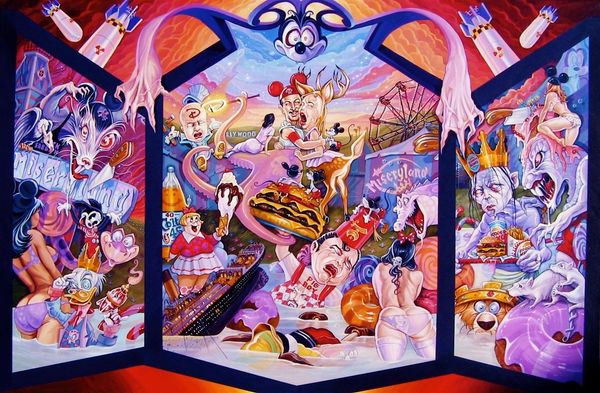
painting, gouache
#
painting
#
gouache
#
landscape
#
naive art
#
russian-avant-garde
#
cityscape
#
painting art
Copyright: Public domain
Curator: Here we have Boris Kustodiev's 1925 stage design rendered in gouache, entitled "Tula, Stage Design for E. Zamyatin's play, 'The Flea.'" Editor: My initial impression is one of delightful naivety. The color palette is vibrant, and the composition, though unconventional, radiates a certain playful charm, almost as if viewed through the eyes of a child. Curator: Indeed. This work encapsulates the avant-garde's experimentation, born in revolutionary Russia. It visually represents the theatrical piece "The Flea," which, through exaggerated characters and plotlines, critiques political opportunism and the societal absurdities that emerged during that turbulent time. The visual vocabulary employed allows Kustodiev to translate that satirical, critical viewpoint into visual form. Editor: I'm drawn to the stylized cityscape. The composition is undeniably flat, but it lends itself to a sort of intentional artifice, a calculated departure from representational accuracy that highlights the very nature of the artwork being a stage set design, blurring the boundary of illusionistic pictorial space with stagecraft. It's not just *of* a stage; it very consciously *is* one. Curator: And let’s consider the pointed referencing to "Tula." As a significant manufacturing centre, its industrial heart became the butt of many satirical jokes within Zamyatin's narrative. Kustodiev visually references folk-art styles to echo traditional storytelling that mocks established hierarchies. The intention being, art shouldn't simply entertain but challenge societal structures by representing counter narratives through visual signifiers. Editor: Yes, if we look closely, it feels like Kustodiev actively disregards spatial conventions, emphasizing planes rather than depth and reducing elements to almost cartoonish proportions; for instance, those bold outlines contribute to the image's graphic sensibility. Curator: By embedding folklore references, a shared Russian vernacular, Kustodiev attempts to involve his audience. The production isn’t merely a form of entertainment; it's an invitation into shared introspection concerning cultural identity when social progress and tradition appear to conflict. Editor: Agreed. Its persistent commitment to color and design transforms its potentially polemic tone to light-hearted visual feast. Curator: Examining art with close attention helps in understanding that artistic decisions made regarding visuals are far beyond mere stylistic preferences; they form powerful commentary upon how art engages wider ideological discourse. Editor: Precisely, and what an intriguing instance this painting offers.
Comments
No comments
Be the first to comment and join the conversation on the ultimate creative platform.
